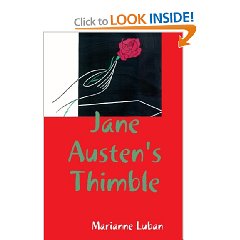Below is my painting of Sennefer and his wife, Hatshepsut, the remains of a dyad in the Paris Louvre. My conclusion is that this sculpture was begun in the reign of Amenhotep II and finished in that of Thutmose IV.
 Just how much the face of Thutmose differed from that of his sire, Amenhotep, is clearly illustrated in the pair statue. How charming this couple is--and how somehow very modern! In the New Kingdom, it was quite usual for the nobility to be portrayed with the face of the current sovereign, men and women alike. That is why so many husbands and wives in Egyptian art seem to have the same face. But not Sennefer and Hatshepsut.
Just how much the face of Thutmose differed from that of his sire, Amenhotep, is clearly illustrated in the pair statue. How charming this couple is--and how somehow very modern! In the New Kingdom, it was quite usual for the nobility to be portrayed with the face of the current sovereign, men and women alike. That is why so many husbands and wives in Egyptian art seem to have the same face. But not Sennefer and Hatshepsut.
Arthur Weigall saw the lower parts of five statues in a certain cenotaph at Gebel Silsileh, which he describes in his "A Guide To the Antiquities of Egypt":
"(West Bank) A roofless tomb is now reached, in which the lower parts of five statues can be seen. These and the scenes on the walls show that a certain Sennefer was buried here with his wife, Hatshepsut, these names dating them to the 18th Dynasty. Sennefer was a libation priest of Amen attached to the palace at Thebes, and seems to have been the son of the "Royal Son, Governor of the lands of the South", Usersatet and of Anun his wife. The Lady Hatshepsut was the daughter of the chief nurse of the king, named Hemttaui, and her husband Seninefer, a priest.[More recent Egyptologists have interpreted these relationships differently.] Other relatives were a High Priest of Horuar and Sebek of Ombo, a High Priest of Nekheb (at El Kab), a Priest of Khnum, and others whose names and titles are now lost. On the north wall Sennefer and his wife are seen seated before a table of offerings, while before them a male harper plays upon a large harp and two nude women, one playing a stringed instrument, dance for the amusement of these dead persons, etc., etc...."
Sennefer, then , was a very grand person, indeed, the son of a Viceroy of Kush. The countenance of Sennefer first struck me by its beauty and by the fact that it looks enough like the face of the mummy of King Thutmose IV to be his twin! Whether the priest was an actual relative of Menkheperure cannot be known for certain but the cenotaph definitely indicates that it was begun in the time of Amenhotep II. In fact, the Lady Hatshepsut has features that match those of that pharaoh's mummy. So, what may have happened is that the sculptor began the group with the figure of the wife during one reign and finished Sennefer's image in the next. Such is the twist of fate that give Hatshepsut the more rugged face of Amenhotep and her husband the beauty of Thutmose IV. In my view, this much-damaged work of art is a powerful argument that the king was already a grown man upon the death of his father (at least in oriental terms) and was, indeed, thirteen years old at minimum. Since we have numerous tomb paintings from the time of Thutmose IV, we can easily recognize the full lips that sit so closely beneath the blunt , slightly aquiline nose of Sennefer--as we have seen these features drawn many times before, almost in caricature. Yet Sennefer's portrait shows us, for the first time, how attractive they were in actuality. The features certainly do not suggest those of a lad of thirteen. Since Thutmose IV is thought to have reign about nine years and his mummy seems to be one of a man of around thirty, a twenty-year-old is more likely portrayed. The name of Sennefer's wife is also significant. While Queen Hatshepsut reigned, there were probably a number of Egyptian girls called after her, including a young wife of Thutmose III. Therefore, the spouse of Sennefer had to be born previous to the proscription of the name of Hatshepsut, which began sometime at the end of the reign of Menkheperre T III. This indicates that the dyad was begun when Hatshepsut, Sennefer's lady, was more than forty years old, around the time of the death of Amenhotep II. The cenotaph may be seen here
 Just how much the face of Thutmose differed from that of his sire, Amenhotep, is clearly illustrated in the pair statue. How charming this couple is--and how somehow very modern! In the New Kingdom, it was quite usual for the nobility to be portrayed with the face of the current sovereign, men and women alike. That is why so many husbands and wives in Egyptian art seem to have the same face. But not Sennefer and Hatshepsut.
Just how much the face of Thutmose differed from that of his sire, Amenhotep, is clearly illustrated in the pair statue. How charming this couple is--and how somehow very modern! In the New Kingdom, it was quite usual for the nobility to be portrayed with the face of the current sovereign, men and women alike. That is why so many husbands and wives in Egyptian art seem to have the same face. But not Sennefer and Hatshepsut.Arthur Weigall saw the lower parts of five statues in a certain cenotaph at Gebel Silsileh, which he describes in his "A Guide To the Antiquities of Egypt":
"(West Bank) A roofless tomb is now reached, in which the lower parts of five statues can be seen. These and the scenes on the walls show that a certain Sennefer was buried here with his wife, Hatshepsut, these names dating them to the 18th Dynasty. Sennefer was a libation priest of Amen attached to the palace at Thebes, and seems to have been the son of the "Royal Son, Governor of the lands of the South", Usersatet and of Anun his wife. The Lady Hatshepsut was the daughter of the chief nurse of the king, named Hemttaui, and her husband Seninefer, a priest.[More recent Egyptologists have interpreted these relationships differently.] Other relatives were a High Priest of Horuar and Sebek of Ombo, a High Priest of Nekheb (at El Kab), a Priest of Khnum, and others whose names and titles are now lost. On the north wall Sennefer and his wife are seen seated before a table of offerings, while before them a male harper plays upon a large harp and two nude women, one playing a stringed instrument, dance for the amusement of these dead persons, etc., etc...."
Sennefer, then , was a very grand person, indeed, the son of a Viceroy of Kush. The countenance of Sennefer first struck me by its beauty and by the fact that it looks enough like the face of the mummy of King Thutmose IV to be his twin! Whether the priest was an actual relative of Menkheperure cannot be known for certain but the cenotaph definitely indicates that it was begun in the time of Amenhotep II. In fact, the Lady Hatshepsut has features that match those of that pharaoh's mummy. So, what may have happened is that the sculptor began the group with the figure of the wife during one reign and finished Sennefer's image in the next. Such is the twist of fate that give Hatshepsut the more rugged face of Amenhotep and her husband the beauty of Thutmose IV. In my view, this much-damaged work of art is a powerful argument that the king was already a grown man upon the death of his father (at least in oriental terms) and was, indeed, thirteen years old at minimum. Since we have numerous tomb paintings from the time of Thutmose IV, we can easily recognize the full lips that sit so closely beneath the blunt , slightly aquiline nose of Sennefer--as we have seen these features drawn many times before, almost in caricature. Yet Sennefer's portrait shows us, for the first time, how attractive they were in actuality. The features certainly do not suggest those of a lad of thirteen. Since Thutmose IV is thought to have reign about nine years and his mummy seems to be one of a man of around thirty, a twenty-year-old is more likely portrayed. The name of Sennefer's wife is also significant. While Queen Hatshepsut reigned, there were probably a number of Egyptian girls called after her, including a young wife of Thutmose III. Therefore, the spouse of Sennefer had to be born previous to the proscription of the name of Hatshepsut, which began sometime at the end of the reign of Menkheperre T III. This indicates that the dyad was begun when Hatshepsut, Sennefer's lady, was more than forty years old, around the time of the death of Amenhotep II. The cenotaph may be seen here








2 comments:
Thutmose III's erasures of his aunt's names does not imply that there was a general proscription of personal name Hatshepsut, which had after all been around since the Middle Kingdom and was not precisely uncommon. A woman by this name is attested as the spouse of a Meryamun who usurped the tomb of Wah. And Userhet, priest of the royal ka of Thutmose I, descendant of Hapuseneb, and contemporary of Seti I, was married to a lady called Hatshepsut.
Moreover, Ma'atka was used as a personal name in the mid-18th Dynasty, just as Menkheper and Djeserka were. And let us not forget the High Priest of Amun who named his children Menkheperre and Ma'atkare, and the king who named a daughter Ma'atkare, at the beginning of the Third Intermediate Period.
Neither "Hatshepsut" nor "Maatkare" were ever common names for girls--at least not among the elite, the names of their wives, sisters, and daughters being mentioned in their tombs. However, as I mentioned, the most likely time for a baby girl to be given the name of Hatshepsut was when the lady was either queen, regent, or king. By the time of Pinudjem I, who named his children Menkheperre and Maatkare, the family problems of previous dynasties would not have seemed very important--if even remembered. Manetho, the historian of the Ptolemaic era, had no idea that Hatshepsut had usurped the throne of Thutmose III, nor could he recall her actual names. All that seems to have been recalled was that a woman king reigned before Thutmose for 21 years and 9 months. Manetho knew that Thutmose had succeeded in the 9th month of the year, so just assumed that was the month in which the woman-king died.
Post a Comment